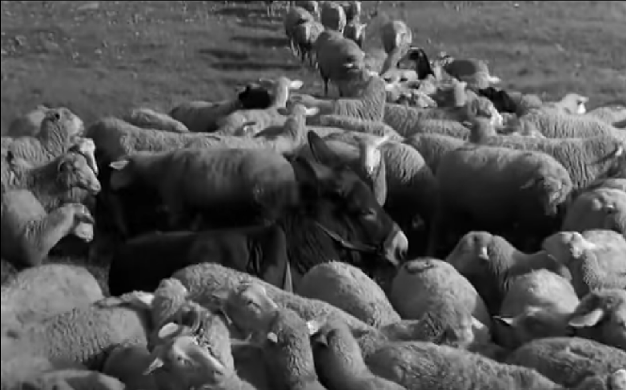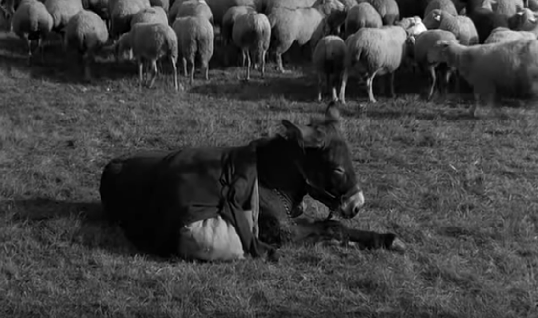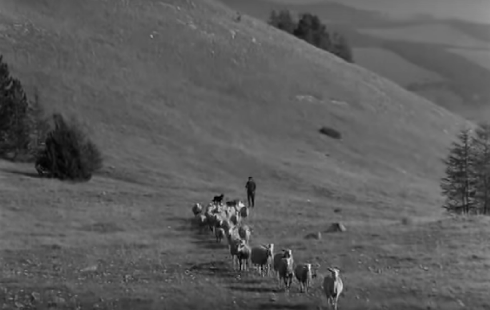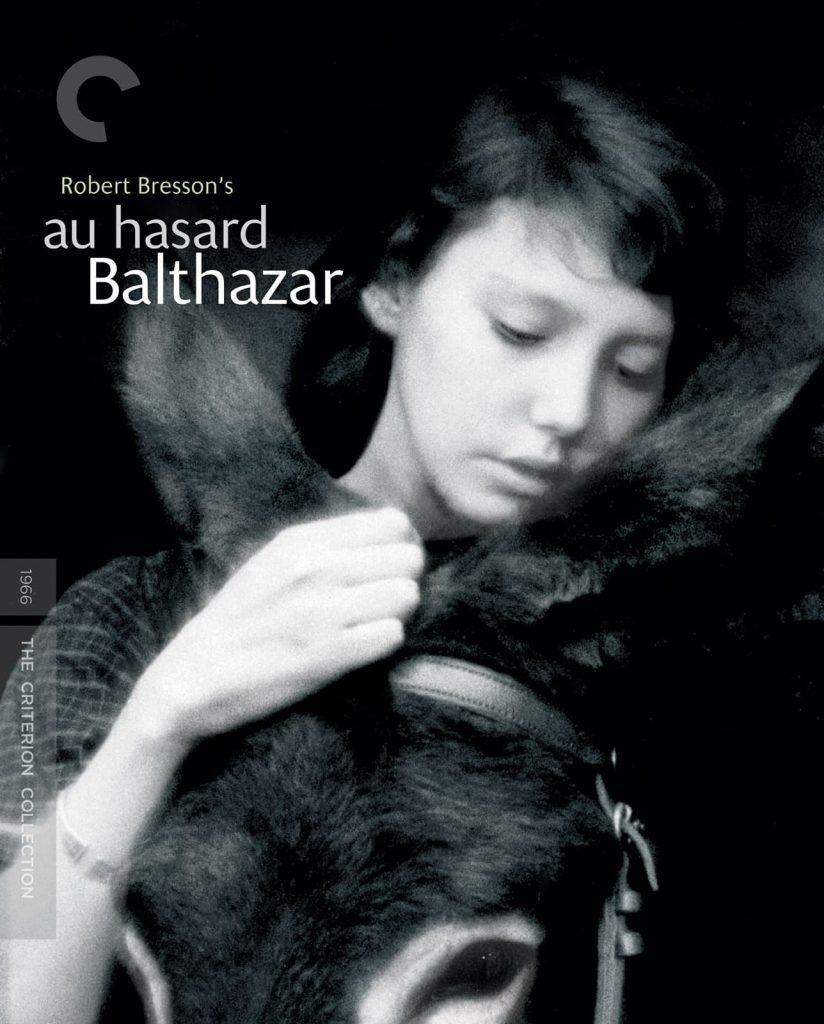Au Hasard Balthazar (dir. Robert Bresson, 1966) juxtaposes the human treatment of animals with animal camaraderie between different species, emphasising a human/animal divide and how we think of animals as one homogeneous group that we are not apart of, despite biological taxonomy saying otherwise.
The final scene of Au Hasard Balthazar is where Balthazar finally has peace, wandering into the protection of a flock of sheep to die of his gunshot wound. The scene demonstrates the animal/human divide as after so much maltreatment at the hands of humans, he finds sympathy amongst being completely surrounded by the sheep, as if they are protecting him despite the fact he is mortally wounded. Furthermore, the fact that the dogs then bark to order the sheep away from Balthazar shows the bond he shares with the sheep is that of subservience. The only sounds being the bark of the dogs and the ringing of the bells on the neck of the sheep is a way of establishing the hierarchy, with sheep being below the dogs as they are weaker, who are in turn below the human farmer who orders them.
When Balthazar is dying his head is drooped over with sombre piano music playing in the background, the sheep now not surrounding him but rather standing several feet away. With the drooping of the head and the sad music, Bresson is conveying Balthazar’s sadness at his abandonment by even the sheep. However this is due to the orders of the shepherd, who we only see framed insignificantly in the distance. By framing the farmer so insignificantly yet having him controlling the actions of all the animals but Balthazar within the scene, Bresson is showing metaphorically how distant humans are from animal struggles as he disrupts the natural reaction of the sheep to comfort Balthazar so he can continue with his work.
Finally, as we see Balthazar laying dead the music has stopped and all we hear are the bells of the sheep. The sombre music ending as Balthazar’s life does implies this sadness is internalised within only Balthazar and now it’s over the moment of sadness has passed and that life will continue to the sounds of bells and barking dogs, representing the exploitation of animals by humans for work.
Ultimately Bresson is attempting to paint a sympathetic picture of what the life of an animal is like. By ascribing Balthazar human emotions using the sad music, he tries to make the donkey’s plight relatable to human viewers and to question how we react to animal suffering when presented in a human way. Furthermore, by framing the farmer as a small, lone figure controlling nearly a hundred animals shows the power humans have over them and metaphorically how distant we are from the struggles and suffering it causes. Balthazar is the focal point of both the scene and the film as a whole and by showing us his cruel death in such an emotionally impactful way, Bresson is forcing us to think of the life of each animal as equally important to that of a human.



